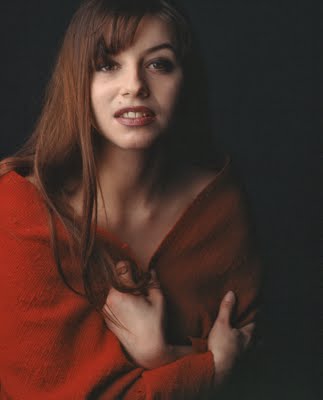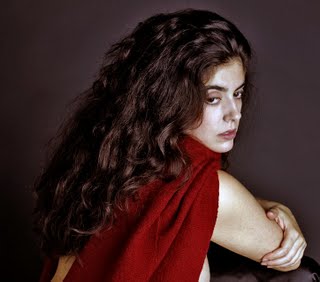The Age Of Flickr
Tuesday, January 12, 2010

My friend Ian McGuffie often says that 20 years ago if you walked around Stanley Park you would occasionally run into people with a camera around their neck. These cameras were often expensive or moderately expensive Nikons, Canons, Pentaxes or Minoltas. McGuffie also says, “You could never tell what kind of pictures those people took because they could not publish them or show them anywhere. It is because of this that I cannot assert that photographers then were any better than the ones we have now. Perhaps the photographers of those days were terrible, but we have no way of knowing.”
The advent of the digital camera, in which a $150 point-and-shoot can take pictures that not only “turn out” but can be quite nice, has evened the playing field. Not too many in those Stanley Park days of yore could afford a Nikon FM-2 or a Pentax LX. The digital camera has evened the playing field much in the same way that the mass-produced Colt .45 made a gunfighter’s day decline with competition. The freelancer of the 20th century, the professional photographer is much like that freelancer of the 19th, the gunfighter. The 21st century has made me as obsolete as running boards and horse whips.
In 1979 or thereabouts I lit my photographs using what at the time was a rare item. It was a rip-stop nylon portable tent (similar to the modern camping tent) called a soft-box. The pictures with the soft box had much less contrast than pictures taken with a direct flash. The soft box soon became part of my style (the pictures here were all taken with such a device) and brought me lots of magazine and annual report work. I would light lumber mill workers in Prince Albert, Saskatchewan or Lumby, B.C. with them and soon I was being paid a week’s worth of lofty day rates to repeat the pictures in mills across Canada, from the ground and from the air in a helicopter (no soft box, natch).
The diminishing of the logging industry in Western Canada happened at the same time that film-based cameras and related photograpy began their downturn and the emergence of the digital “peacemaker” or “equalizer”. Any photographer today can imitate and improve on my photographic methods and do it much more cheaply. I am a hired gun in a peaceful community where the rule of law has replaced the free range.
Like that rare gunfighter who somehow managed to retire without being gunned down by the latest town hot-shot, I can observe that the playing field has resulted in a uniformity of technique. Pictures look much like each other. McGuffie might say, “Contemporary photographers are not better than those from the past. The difference lies in that they now have the power to “publish” them in social network sites.” I like to use the word Flickr as a verb. It is my contemporary replacement for "to make the same". Photography, particularly that in social network sites, is being Flickrd.

Today I gave my last class, Style Development, to the 7th generation of students at Van Arts. They are DP7 (Digital Photography 7). I spent most of Monday night trying to figure out how to help (even what to say) to a generation faced with the photographic uniformity I write about above. How are they going to achieve what I call the Holy Grail of Photography, a readily observable personal style, in the age of Flickr?
Here is the handout I wrote. Those of you who are photographers might understand some of the points and some might not. But the questions I raise and the assertions I make are not written in stone. Perhaps there is another way. If there is then I can soon sleep well at night knowing that the Age of Flickr is past and that individual style is back in a new renaissance.
The pictures you see here were all taken with a single light attached to a 2x3 ft Chimera soft box. These pictures would have been unique in the 80s and 90s. My contemporary students can now match and improve on this style. One of the elements I have harped about to my students is to take pictures with a theme. The theme here is my mother's red Mexican rebozo that was given to her around 1953. I have used it to photograph many people through the years. I often take it to class and my students use it. Their pictures look like mine. I have been equalized!

January 12, 2010
Style Development
Van Arts
Last two classes
Alex Waterhouse-Hayward
I taught high school until 1974 in Mexico City. We decided to sell our house and move to Vancouver. We quit our jobs. Suddenly we could not sell our house and I had to make money in some way. With a Pentax S-3, and 55, 36 and 120mm lenses I went into business shooting the children and teenagers of wealthy Mexicans. I used Kodak Tri-X exclusively and I had no lights. I printed and processed everything in my bathroom. I made good money and for a while we almost thought we would change our mind.
We moved to Vancouver in 1975. I could not get a job as a photographer so I washed and rented cars for Tilden Rent-A- Car on Alberni Street.
After a year I was able to get work. By 1982 I had established myself as a photographer with a very definite style.
By 1986 most ad agencies were looking for a universal (no style) photographer and I was shunned. Having a recognizable style was a bad thing in Vancouver then. I can count with one or perhaps two hands the jobs I have done for ad agencies. I made the mistake of stressing magazines and did not promote myself too much with all the head offices who were giving out jobs in annual reports. Yet I did quite a few of them for very good money. Magazines wanted unique styles. They wanted pictures that would draw viewers into reading.
It is Monday night and I am trying to nail down what style is and how to go about it. In a compilation of projected pictures I have divided them into themes:
1. Borrowing from art.
2. Working with artists
3. Shooting landscapes
4. Using unusual lighting techniques like Hollywood lighting.
5. The cliché works because it is a cliché
6. The use of hands
7. Literature and reading inspires ideas.
8. Nostalgia offers a wealth of inspiration
9. Religion even if you don’t practice it or believe in it is a mine of inspirational images and tradition (the cliché)
10. The narrow theme (in my case my mother’s red Mexican rebozo) is a source of ideas for shooting portraits. I find that the less freedom you give yourself the more likely you will come up with an original idea.
11. Just like literature and art can inspire so can music and films.
12. Shooting dance and dancers is extremely important in teaching you to pose those who are not inherently graceful.
13. You must shoot nudes as nudes seem to awaken a desire to experiment in ways you might not think of with other more mundane endeavors like documenting fire hydrants.

I cannot tell the class what they should do to develop a style that is their own but I can look back to what I did (without really knowing what I was doing ) which brought me to have a style.
It is obvious that in our contemporary world there are more photographers than ever before who are no longer stifled by being able to appear in hard copy. Pictures can now be "published" and placed on the web.
Just like many Japanese cars look like Audis and many a Mercedes looks like a BMW there is a fading away of a unique style not only in car design but in conventional TV entertainment. The same has happened to photography.
How is it possible to take unique pictures if thousands upon thousands have the same equipment you have?
My style came when I eschewed my 35 and opted for the 6x7 camera. I was one of the first in Vancouver to use a Chimera soft box and I am still one of the few who uses spotlights (both focusing and Fresnel) with gobos. I use a ring flash in a different way that came about by an accident.
But if I would narrow down what it is that I do that gives me as style it is:
1. I have never used zoom lenses.
2. Any lens is a portrait lens, especially a moderate wide angle. The lens that gets you closest to your subject will in the end be the best one.
3. I consider the photographer to be no different from that of a cook. This means that while you might specialize in one thing (sea food could be an example) you must know how to do everything else with some good level of confidence. Photographers must look at what they know how to do just like a mental recipe book. You cook what is needed and you must accommodate that one person who says she is a vegetarian just when you put the roast beef in the oven.
4. The ignorant photographer will be a lousy photographer. The more you read, the more you look at paintings and photographs, the more you listen to a varied repertoire of music, the more hobbies you have such as gardening (that’s my case) the more original you will be in the execution of your photography. You will get along better with those you deal with you and your arts awareness and reading will help yo connect with your subject.
5. I don’t think it is possible to have a unique style unless you are prepared to light your photographs.
6. Not bracketing and making sure the exposure is the correct one means I took fewer pictures. Shooting fewer pictures to me meant less expense and to you it will mean less work in post production after you shoot.
7. The revolving back on my 6x7 forced me to think in vertical and horizontal versions of every shot I took.
Today we will look and critique your past efforts. I will bring hard copy photographs for you to look at and you must not be afraid to ask how they were taken. The only secret I will not reveal (even though I try a lot) is that the key to my photography comes from inside and not from equipment. It comes from connecting with those I photograph.
You might consider that in this perfect world of the perfect photograph, the flaw, a flaw, might just be what will point you in the direction of style.
And you must not forget that:
The medium suggests the method. I will explain this in class today.






